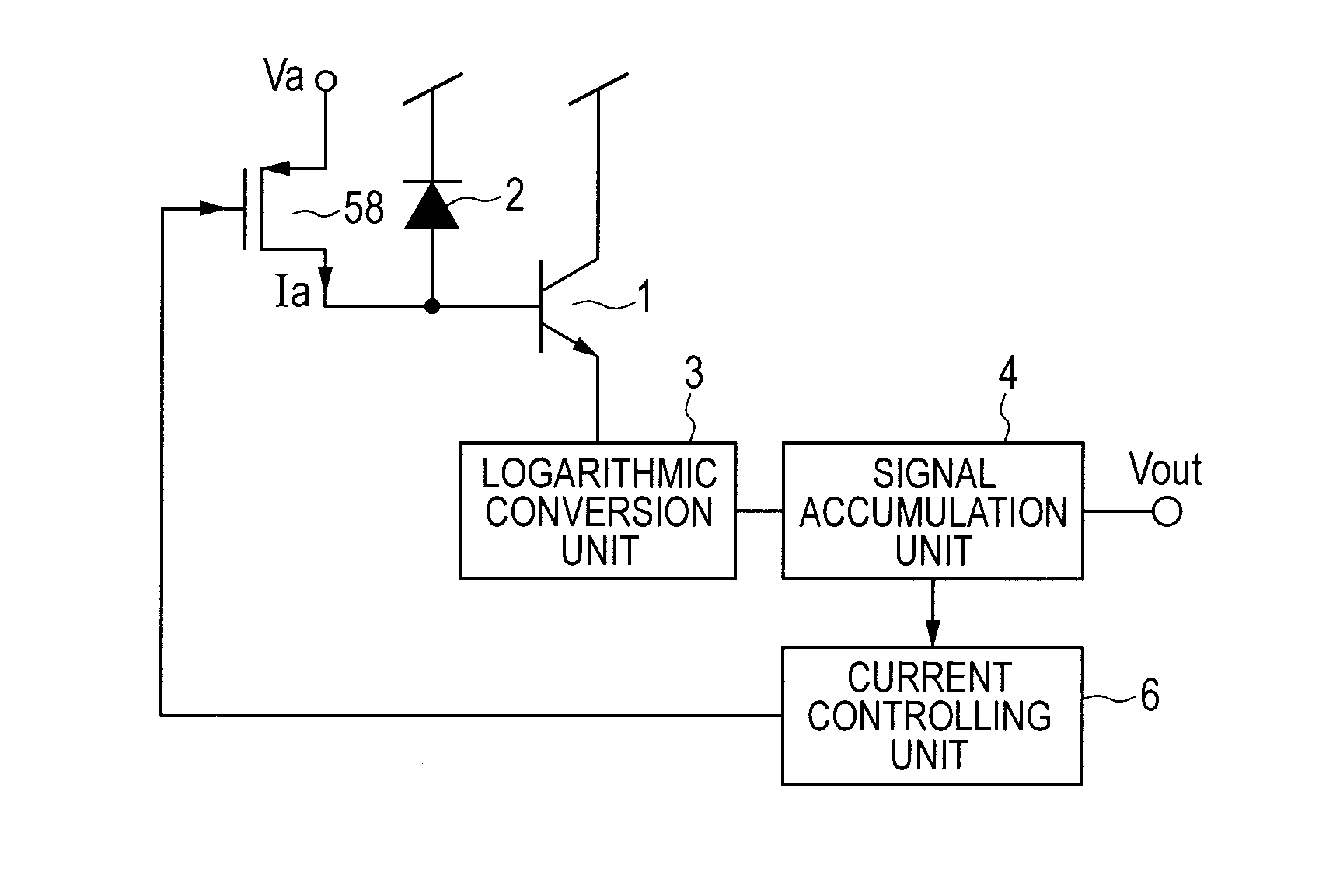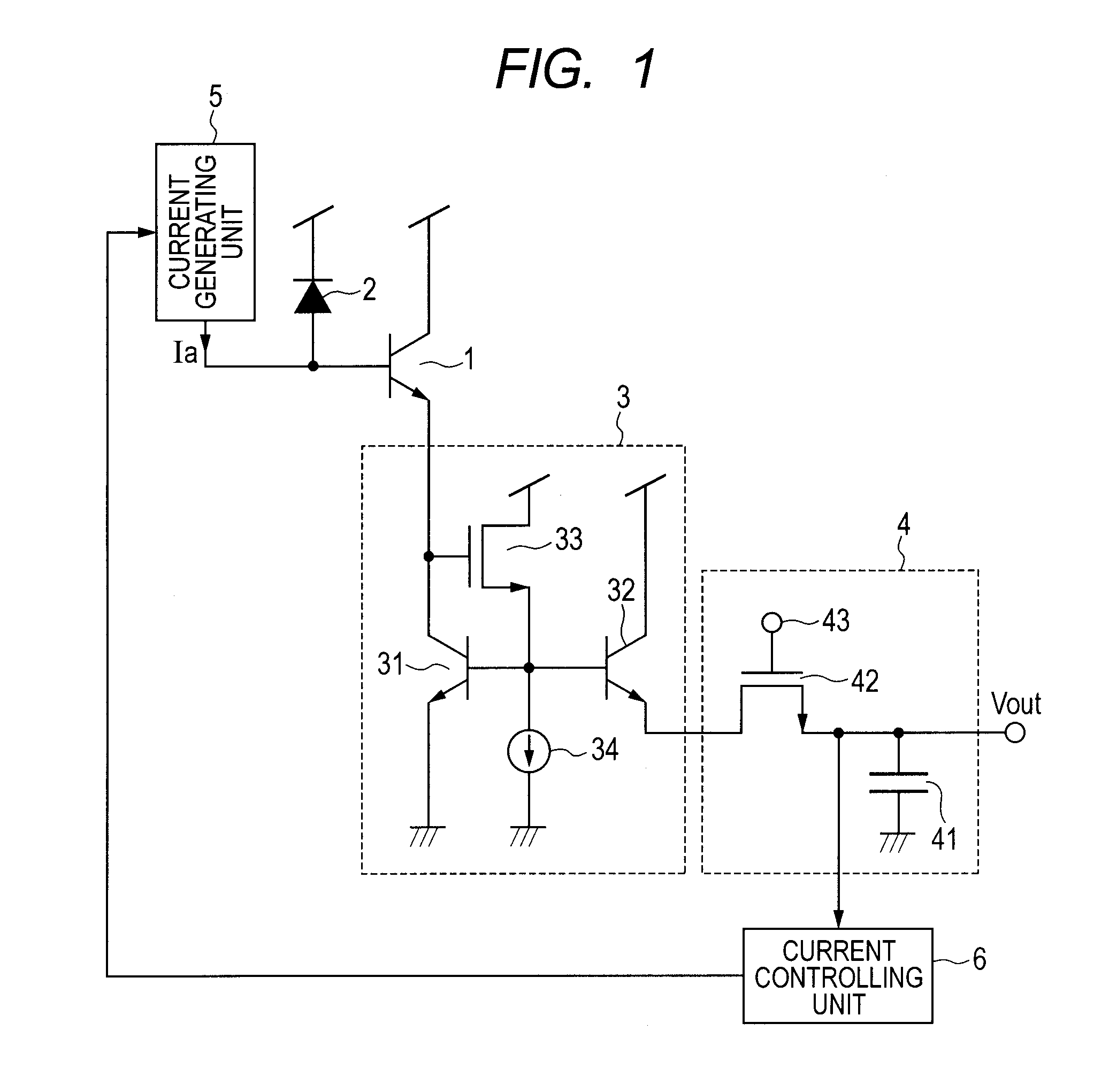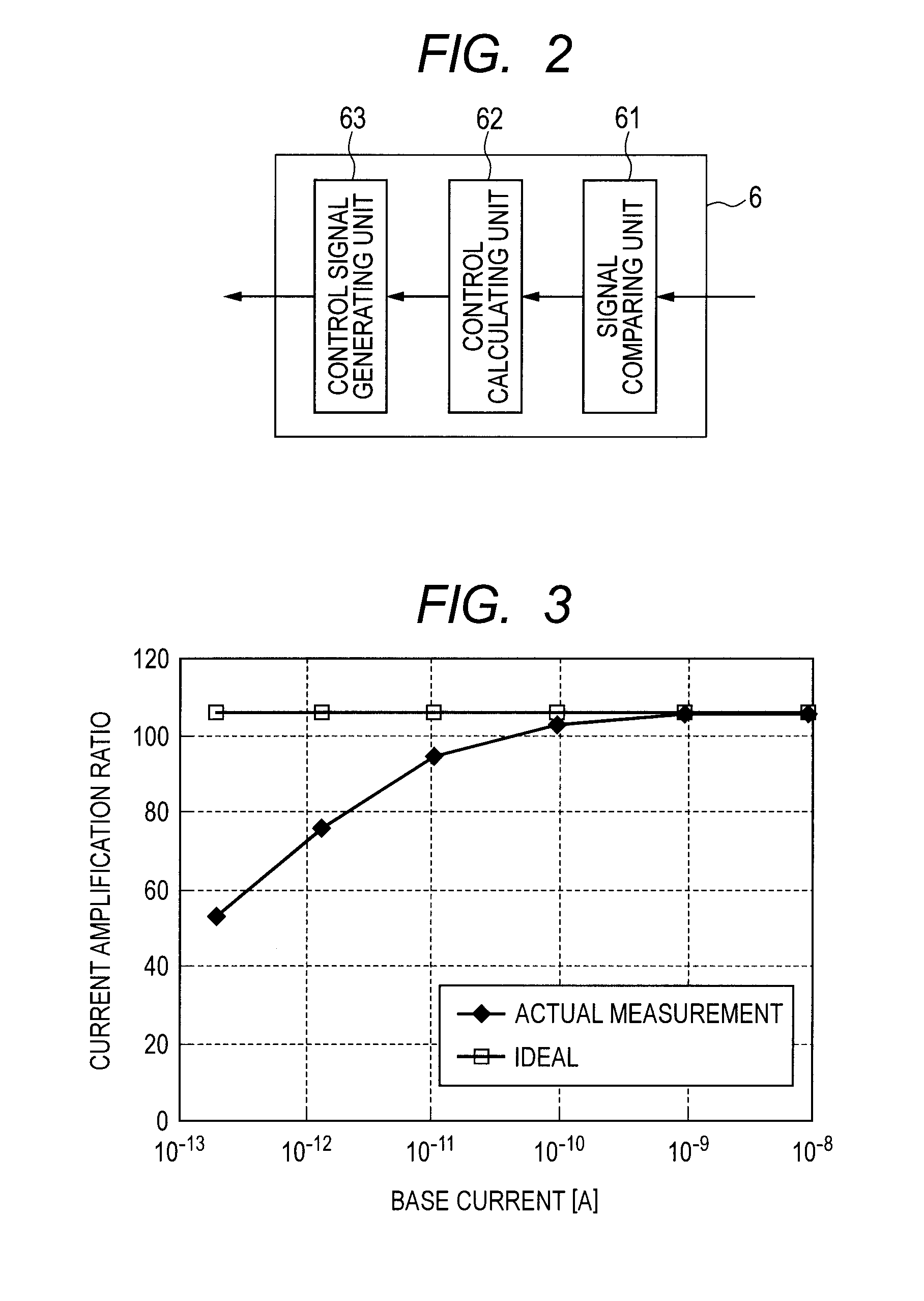Photoelectric conversion apparatus
a conversion apparatus and photoelectric technology, applied in the direction of solid-state devices, instruments, material analysis, etc., can solve the problems of insufficient carrier injection from the emitter to the collector, low current amplification ratio, and degraded photoelectric conversion characteristics at low-light intensity
- Summary
- Abstract
- Description
- Claims
- Application Information
AI Technical Summary
Problems solved by technology
Method used
Image
Examples
first embodiment
[0018]FIG. 1 is a schematic configuration view illustrating a photoelectric conversion apparatus according to a first embodiment of the present invention. FIG. 1 includes a phototransistor 1, and a photoelectric conversion element 2 (e.g., photodiode), where its cathode is connected to a power supply voltage node. The phototransistor 1 is configured such that its base is connected to the anode of the photoelectric conversion element 2 and its collector is connected to the power supply voltage node. The photoelectric conversion element 2 converts light to an electrical signal by photoelectric conversion to generate a current (photocurrent). The phototransistor 1 inputs from the base thereof the current generated by the photoelectric conversion element 2, amplifies the input current, and outputs the amplified current from the emitter. FIG. 1 further includes a logarithmic conversion unit 3 that includes transistors 31, 32, and 33, and a constant current source 34. The bipolar transist...
second embodiment
[0027]FIG. 5 is a configuration example of a current generating unit 5 according to a second embodiment of the present invention. FIG. 5 illustrates an embodiment describing the current generating unit 5 in FIG. 1 further in detail. The phototransistor 1, the photoelectric conversion element 2, the logarithmic conversion unit 3, the signal accumulation unit 4, and the current controlling unit 6 in FIG. 5 are the same as those in FIG. 1. The current generating unit 5 includes a resistor element 55 and a voltage source 56. One end of the resistor element is electrically connected to the base of the photoelectric conversion element 2 and the phototransistor 1; and the other end thereof is connected to the voltage node of the voltage Va. The voltage source 56 generates the voltage Va by the control of the current controlling unit 6. Specifically, the voltage source 56 supplies the resistor element 55 with an appropriate voltage Va required to generate a current Ia to be added to the bas...
third embodiment
[0028]FIG. 6 is a configuration example of a current generating unit 5 according to a third embodiment of the present invention. FIG. 6 illustrates an embodiment describing the current generating unit 5 in FIG. 1 further in detail. The phototransistor 1, the photoelectric conversion element 2, the logarithmic conversion unit 3, the signal accumulation unit 4, and the current controlling unit 6 in FIG. 6 are the same as those in FIG. 1. The current generating unit 5 includes a variable resistor element 57. One end of the variable resistor element 57 is electrically connected to the base of the photoelectric conversion element 2 and the phototransistor 1; and the other end thereof is electrically connected to the node of a constant voltage Va such as the voltage source. The resistor value of the variable resistor element 57 is controlled by the current controlling unit 6, and thereby the current Ia to be added to the base of the phototransistor 1 can be controlled. Thus, in a case in ...
PUM
 Login to View More
Login to View More Abstract
Description
Claims
Application Information
 Login to View More
Login to View More - R&D
- Intellectual Property
- Life Sciences
- Materials
- Tech Scout
- Unparalleled Data Quality
- Higher Quality Content
- 60% Fewer Hallucinations
Browse by: Latest US Patents, China's latest patents, Technical Efficacy Thesaurus, Application Domain, Technology Topic, Popular Technical Reports.
© 2025 PatSnap. All rights reserved.Legal|Privacy policy|Modern Slavery Act Transparency Statement|Sitemap|About US| Contact US: help@patsnap.com



